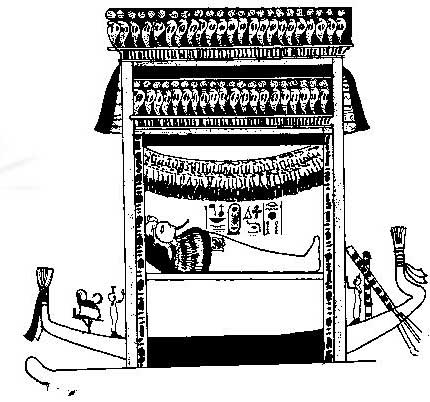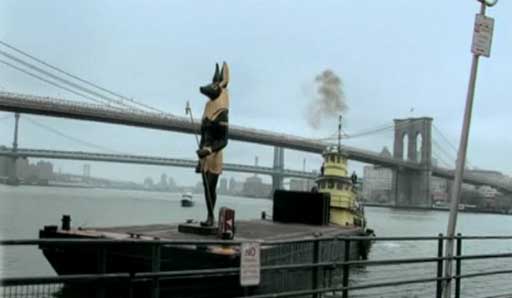

March 23, 2010
Guess who came sailing under the Verrazano Bridge this morning as I watched in awe? Talk about Gods returning at the end of the program .... there he was ... Anubis the Egyptian jackal-headed god associated with mummification and the afterlife in Egyptian mythology (metaphors). In case you don't know ... all of the gods in the Egyptian pantheon, and others, were played by one soul who wore different masks. I call him Z.
Hi ... Z. Welcome back. .... I keep hearing the theme from Welcome Back Kotter about a Brooklyn High School, symbolizing that we are students in a program that is almost over. Soon the bell will sound. Class dismissed. John Travolta was one of Kotter's students in the TV series. In 1977 Travolta made a movie here in Bay Ridge, Brooklyn, with the Verrazano Bridge as the backdrop, called Saturday Night Fever. Welcome Back Kotter aired from 1975-1979. In 1979, New York's The Metropolitan Museum of Art had the last King Tut exhibit in NY. Welcome back!
Welcome Back Kotter Lyrics (check metaphors)
Welcome back,
To that same old place that you laughed about.
Well the names have all changed since you hung around,
But those dreams have remained and they're turned around.
Who'd have thought they'd lead ya (Who'd have thought they'd lead ay)
Here where we need ya (Here where we need ya)
Yeah we tease him a lot cause we've hot him on the spot, welcome back,
Welcome back, welcome back, welcome back.
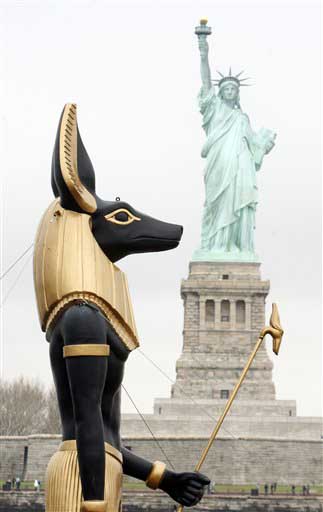
was reminiscent of taking a trip down the Nile River in the Egyptian Program.
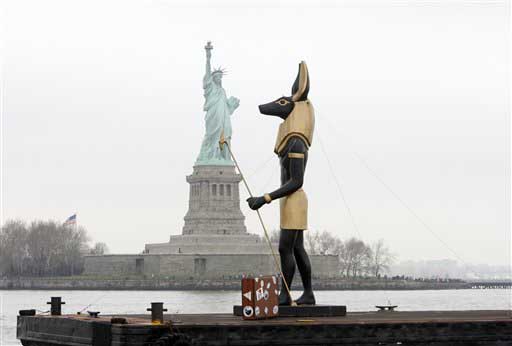
Something about the Egyptian gods sailing past the State of Liberty (SOL ~ Sun), which faces France, had symbolic meaning if you understand the journey of the bloodline and the Masonic Program (our reality) now coming full circle, ending in New York City. Anubis sailed past Ground Zero, which takes us to the program insert for closure, set in place on 9/11.
On March 3, 2010, I blogged about King Tutankhamun. Since then I have had ongoing dreams about the headdresses of both Horus (rebirth) and Pharaoh Akhenaten (one god of light) pictured below. Over and over again I can feel my fingers moving across the brim of one headdress or the other, their rough edges very real to me. I can't shake it as the headdresses appear to me now, even during the day. Maybe it's that egg shape object coming out of the headdress ... yet its the brim just below it that I feel.
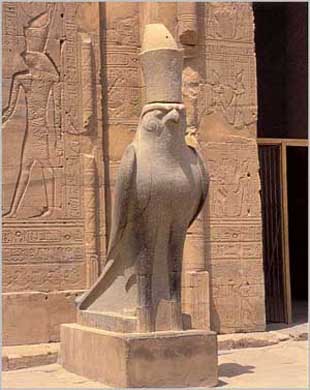
Horus
NYC prepares for return of King Tut's treasures - AP - March 23, 2010
New York City is getting ready to welcome Egypt's boy pharaoh back to the city he wowed in 1979. An exhibit of artifacts from King Tutankhamun's tomb will make its final stop in New York starting April 23 into 2011. It is now at the de Young Museum in San Francisco. The New York exhibit will take place at the Discovery Times Square Exposition. The 1979 King Tut exhibit attracted 1.8 million visitors at New York's The Metropolitan Museum of Art.
It's always about the Funnels, Cones, Horns, Harmonics of Creation.
Spiraling Creation


The Nile didn't just provide food for the ancient Egyptians, it also served as a main highway. Too wide to be bridged, a great many ferryboats carried people and wares from one shore to the other. The wind blowing mostly from the North, sailing upriver on the wide, meant travel on the meandering Nile was relatively easy and fast. Boats often carried large crews in case there was no wind or it blew in the wrong direction. Depictions show cargo ships/barges having a pilot who stood in the bow holding a long pole used to measure the water's depth, then shouting his orders to the helmsman. Blocks of rock weighing many tens of tons and obelisks weighing hundreds were carried downstream from the quarries in Upper Egypt to the building sites of pyramids and temples.

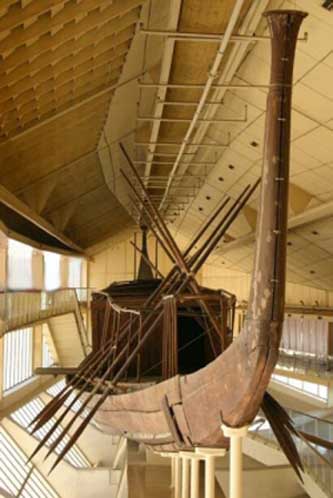
Khufu (King Cheops) allegedly built the Great Pyramid.
The Khufu ship is an intact full-size vessel from Ancient Egypt that was sealed into a pit in the Giza pyramid complex at the foot of the Great Pyramid of Giza around 2,500 BC. The ship was almost certainly built for Khufu (King Cheops), the second pharaoh of the Fourth Dynasty of the Old Kingdom of Egypt. It is one of the oldest, largest, and best-preserved vessels from antiquity. It measures 43.6 m (143 ft) long and 5.9 m (19.5 ft) wide.
It was thus identified as the world's oldest intact ship and has been described as "a masterpiece of woodcraft" that could sail today if put into water. However, the vessel may not have been designed for sailing (no rigging) or paddling (no room).
The ship was rediscovered in 1954 by Kamal el-Mallakh, undisturbed since it was sealed into a pit carved out of the Giza bedrock. It was built largely of Lebanon cedar planking in the "shell-first" construction technique, using unpegged tenons of Christ's thorn. The ship was built with a flat bottom composed of several planks, but no actual keel, with the planks and frames lashed together with Halfah grass, and has been reconstructed from 1,224 pieces which had been laid in a logical, disassembled order in the pit beside the pyramid. It took years for the boat to be painstakingly reassembled, primarily by the Egyptian Department of AntiquitiesÕ chief restorer, Ahmed Youssef Moustafa (later known as Hag Ahmed Youssef).
The history and function of the ship are not precisely known. It is of the type known as a "solar barge", a ritual vessel to carry the resurrected king with the sun god Ra across the heavens. However, it bears some signs of having been used in water, and it is possible that the ship was either a funerary "barge" used to carry the king's embalmed body from Memphis to Giza, or even that Khufu himself used it as a "pilgrimage ship" to visit holy places and that it was then buried for him to use in the afterlife.
The Khufu ship has been on display to the public in a specially built museum at the Giza pyramid complex since 1982. Its discovery was described as the greatest Ancient Egyptian discovery in Zahi Hawass's documentary Egypt's Ten Greatest Discoveries.

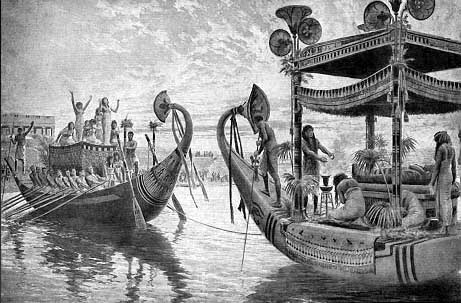
In ancient Egypt, the funerary boat transported a mummy to its final resting place or, if buried with the deceased, took soul of the dead on its eternal journey.
The 19th century print above shows an ancient Egyptian funeral barge facing another boat upon which priestesses are raising their hands (and voices) in lamentation. The boats of ancient Sumer, Babylon and Egypt were not made of wood, but bundles of tightly packed reeds. In the Mesopotamian region, a tall fresh water reed called berdi was used while in Egypt papyrus was the building material. Reeds were tied tightly together in bundles, narrowing towards the ends. The tightness of the lashings is critical in keeping water impregnation to a minimum. The bundles are lashed together with the ends then curling up in the traditional fashion for the papyrus ship. Bamboo or cane seems to have been the traditional material used for constructing the square cabins seen in many pictures and reliefs.
The hidden river/road of Ament is the burial way in Underworld. The body of the deceased Pharaoh travels down the river of Ament (which has no water) in his funeral barque. The Pharaoh makes his way by the words of Isis and Shemsu. The utterances of this great god act as magical protection and perform the slaughter of Apep, who is the serpent/womb in the Duat Underworld in his circle of windings in the sky. "I purify myself. I assume my pure throne, which is in the sky. I will endure. I assume my pure seat in the bow of the Barque of Ra. It is the sailors who row Ra and it is they who will convey me round the horizon." ("What Is In The Duat /Underworld" - Utterance 407). Many important Egyptian gods are seen in boats during ritual processions. Such boats symbolize important sacred time periods.

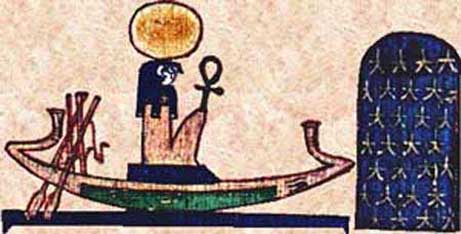
A "solar barge" (also "solar bark", "solar barque", "solar boat", "sun boat") is a mythological representation of the sun riding in a boat. Many early Egyptian goddesses/sun deities, as well as the gods Ra and Horus, are sometimes depicted as riding in a solar barge. In Egyptian myths of the afterlife, Ra rides in an underground channel from west to east every night so that he can rise in the east the next morning.

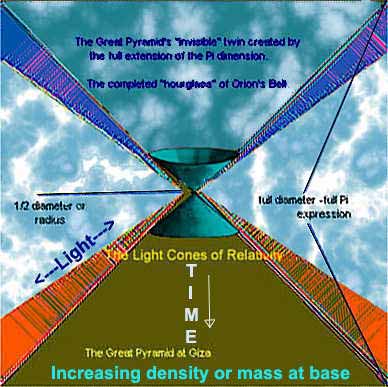
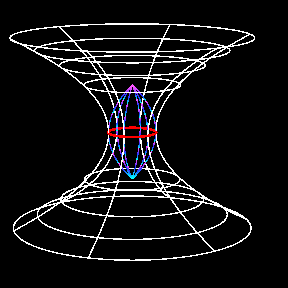
Time no longer exists and consciousness revolves/evolves back to light
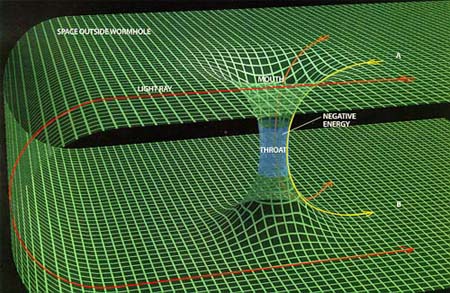
Funnels and Tunnels and Grids Created by Spiraling Cones,
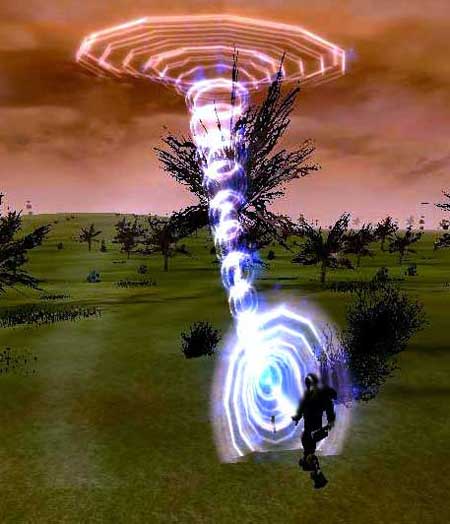
Horns (Creation Harmonics) Sacred Geometry SG - StarGates
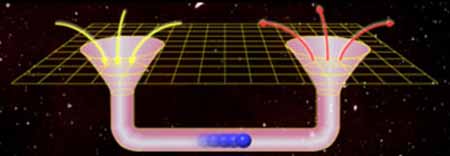
Wormholes, Grids, Time Travel
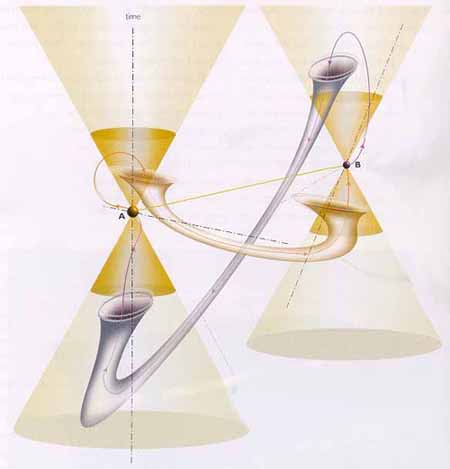

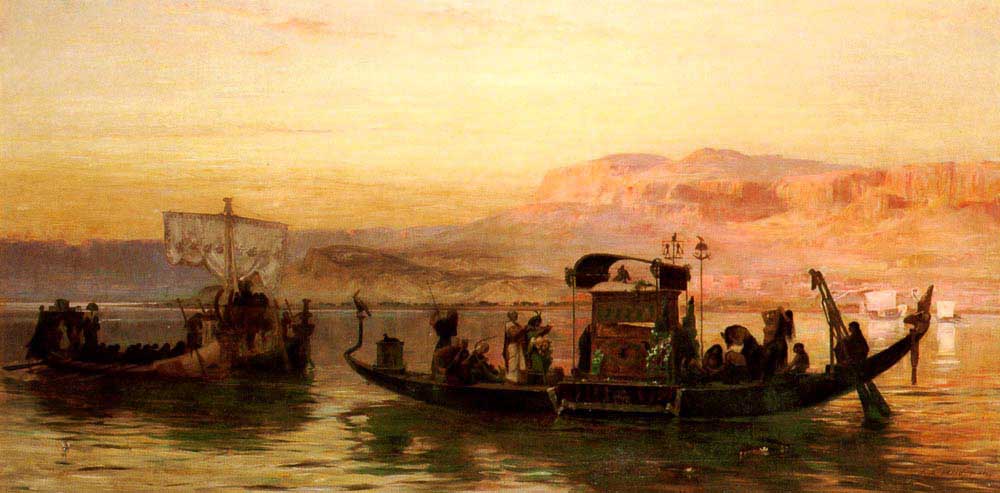
When the Pharaoh Akhenaten revolutionized Egyptian religion, he renamed his pleasure barge "Splendour of Aten" after his dominant god. A miniature of a royal barge was amongst the booty of the tomb of Tutankhamun.

